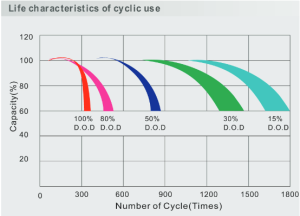Dual battery systems – the basics you need to know
Want to be able to run the accessories you need and minimise your risk of a flat battery, then a quality dual battery system is a must.
You’re on your big road trip and you stop for the night. After raiding the camping fridge for dinner, you forget to switch it off and fall asleep blissfully unaware. In the morning you wake to a flat car battery, and you’re stuck in the middle of nowhere!
Yes, it’s a worst case scenario, but it’s not an unrealistic one.
This is just one instance where a dual battery system could have saved a lot of hassle. Having a second battery ready to go within your vehicle means you can power accessories without the stress of having a dead car battery bringing everything to a halt.
Reasons to fit a dual battery system
There are many reasons why a dual battery system is a good option. Perhaps holidays are spent camping remotely and you need to keep the fridge running, phones charged and camp site lit up. Maybe you run work equipment, radios, lights and inverters when your car’s not turned on. Or you may simply like to use your fridge for those beach day trips with the kids.
If you want to be able to run whatever accessories you need and minimise your risk of a flat battery then this vehicle accessory is a must.
Selecting the correct battery for your needs
There are a few types of battery choices out there, and deciding the use for your second battery and where you want to mount it will help you to determine which kind to purchase.
Opting for a regular lead acid battery has the benefit of being cost effective and designed to be mounted under the bonnet. These are great as a backup starting battery but not suitable to rely on running accessories for long periods. Each time a lead acid battery is run flat its lifespan is dramatically reduced.
A deep cycle battery is a great option for running accessories. They are designed to be repeatedly drained and recharged but are not designed for cranking and may have maximum recharge rates. They also may not be suitable to mount under the bonnet.
A dual-purpose battery such as Century’s Overlander range can be a good compromise between the two. They are designed for off road use, (sturdier construction), are suitable for use as a starting battery and are “semi-cycling”.
Remember that if you intend to mount the second battery under the bonnet you need to ensure it is designed for that purpose and the set-up is not only functional but is tidy and safely wired.
With any battery the less it is discharged the longer it will last, the below graph is for a Century deep cycle AGM battery and graphically shows how many times you can cycle the battery with differing depths of discharge.
Ensuring you have the correct charging setup
There is no “one solution fits all” here, there are many products and configurations available to suit almost any requirement. Three main examples are listed here.
A BCDC charger is an in vehicle battery charger that claim to be able to charge a battery to 100% and some have options for solar input. They do have limitations though; they may not work if your battery is too flat and have a maximum charge rate limited by the unit. They also won’t help if you want extra capacity to run a winch and you can’t jump start through it.
A voltage sensitive isolator automatically cuts in and out with battery voltage. Charging is left up to the alternator so cable size is important. A dual sense isolator will allow charging in both directions, handy if you have a solar panel charging the auxiliary battery. The downside of these is they are not suitable to jump start through and some can be unreliable.
A basic solenoid needs to be wired so that it switches on and off with ignition. These solenoids are generally rated to be able to jump start through and have a very simple operation so there’s not much that can go wrong. Cable size is important as charging is done by the alternator and it needs to see the battery as a load.
No matter which option you choose an isolation device of some sort is a must in a dual system, as you need to isolate the second battery when the car is not running to prevent two flat batteries.
For battery mounting, Australian manufacturers, such as Piranha, produce reliable trays for mounting your secondary battery securely.
Use batteries with care
We believe a dual battery system’s main priority should be to get your vehicle running if your normal starting battery dies, and running accessories should be the secondary priority.
As good as a cold drink when camping is, it won’t help you start your vehicle if you are stuck with a flat battery!
Feel free to contact us for more information about dual battery system installation on the Gold Coast or alternatively check out our Dual Battery page on our website here.


